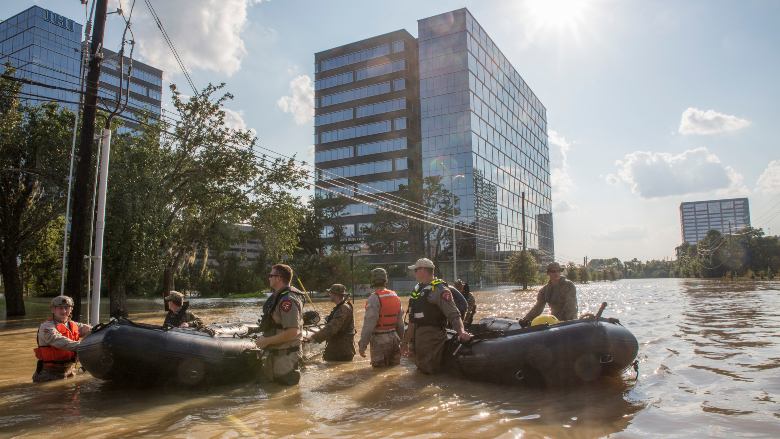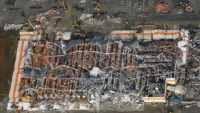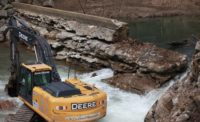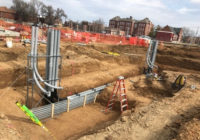Codes and Standards
ASCE Adds 500-Year Flood Protection to 7-22 Design Standard

The Houston area experienced a 500-year flood in 2017 during Hurricane Harvey, its third consecutive annual event.
The American Society of Civil Engineers has updated its design standards to better protect buildings and structures from severe flooding and sea level rise.
A new supplement to ASCE/SEI 7-22 ties flood-hazard mitigation to the level of risk a structure presents to human life if it fails, and consequently expands the number of buildings that would need to withstand loads from a flood.
ASCE 7-22 currently has four categories of risk. Under the new supplement, all but the lowest hazard structures—such as barns and sheds—must now use the 500-year floodplain to determine flood loads. Buildings considered to be in the 7-22 standard's Risk Category I may still adhere to the 100-year floodplain.
In a statement, ASCE Executive Director Tom Smith called the supplement “the most significant change to the standard’s flood load provisions since the inception of ASCE 7.” Ronald Hamburger, senior principal at Simpson Gumpertz & Heger and chair of the group's 7-22 committee, said it marks “a dramatic change to the current standard but will help residents and businesses feel secure despite weather-driven challenges.”
The revision shows recognition of U.S. jurisdictions that have moved to increase flood protection standards after facing severe weather, says Dan Cox, an engineering professor at Oregon State University who led the committee behind the supplement. For example, in Harris County, Texas—which experienced 500-year floods in three consecutive years from 2015 through 2017—officials have updated local regulations for developing sites in floodplains and are in the process of revising local flood maps.
“Nationally, as a standard, we don’t want to just wait for every single community to get hit by a disaster,” Cox says. “That’s pointless. So let’s improve the standard for everybody.”
Flood Mitigation Planning Requirement
The supplement also adds a design flood-mitigation planning requirement relative to sea level rise over the service life of a given structure. It is based on historic rates of sea level rise, according to Cox, rather than current projections that show potential for seas rising at a faster rate in the coming decades.
That decision was a compromise between ASCE experts who say the provision goes too far, and those who say it is not enough, Cox says. Ultimately, the decision to use the available historic sea level data would ensure communities actually adopt the consensus standard.
“You can always come up with something that’s ‘more scientific,’ if you will, but that doesn’t mean people are going to use it,” he says.
John Ingargiola, lead physical scientist at the Federal Emergency Management Agency, said in a statement that the supplement “is consistent with observations made over decades of post-disaster building performance studies.” It also aligns with federal initiatives to improve building performance and improve climate resilience.
“The supplement moves flood design into closer alignment with the probabilistic approach used for other loading conditions in today’s consensus standards,” he said.
The supplement is available as a free download from the ASCE website.







